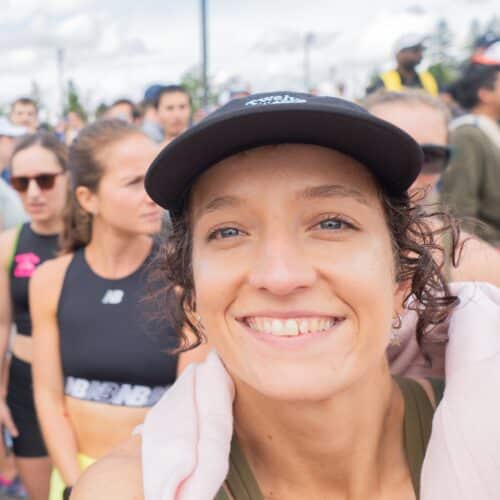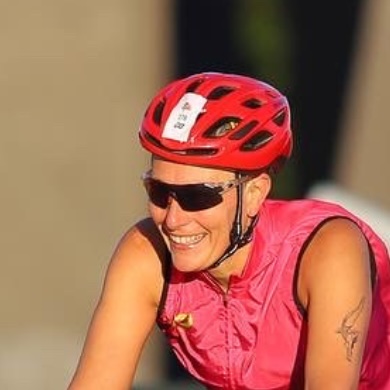Main Menu
Can you recommend any stretches or remedies for a tight IT Band?
Stretching can be tremendously helpful with IT issues ( specific ones can be found online) or ask a physical therapist/personal trainer in your area. Additionally, change up your running pattern. Reduce mileage. Integrate some walking breaks. Stay mostly flat and run soft dirt trails. Increase rest days. Take up other forms of exercise such as swimming, water running, and easy spinning when flare ups occur. Icing can help the inflammation along with electric stimulation and some easy rolling. Ultimately you have to give yourself enough rest or the problem will become chronic and you could end up with more invasive treatment.
I swear by acupuncture at the first twinge of any ITB issues. But that’s pricey. Additionally, I immediately do hip resistance band exercises, because often, ITB tightness is due to an inactive glute/hip combo. Doing side walks with a band around your ankles has the ability to stop ITB pain practically right away, if a weak hip/glute is the underlying problem.
- Stretching:
- Figure 4 while standing
- Pigeon pose in yoga
- Crossing the affected leg behind while standing and reaching your arms up and over the other direction (photo attached)
- Foam rolling is a key helper! get in there and work through the “speed bumps”
- Pro-Tec Athletics makes an ITBand band to help relieve the strain on your knee
- Jane Fondas for strengthening the glutes (reference my book for a description).
I have not suffered this directly, but I have endured listening to a husband who suffers from it. He tried stretches, etc. with little results. However, he started cross training at a bootcamp/weights class, and simply strengthening his glutes, hips, and thighs has almost eradicated his issues. I know as runners we can get tunnel vision, but balanced strength can often solve most problems.
When a runner has had IT band issues for months, there’s normally an underlying issue, most commonly being weak and/or tight hips. Or it might be that a person’s glutes aren’t activating while running or possibly some other strength and stability issue. Definitely stretch (pigeon pose, figure four, and reaching to the outside of the foot while standing with your legs crossed are common stretches), but I’d also look into adding in some type of core routine (think hips, glutes, and hamstrings!) as well as making sure you actually feel your glutes engaging while on a run. If a cross over gait is present (your knees might rub together) then that’s the first thing I would try. Also, I know most people don’t want to do this, but sometimes seeking out a good physical therapist who is used to working with runners can help you get to the root of the problem in one session.
The other ladies have hit the nail on the head here, but just to hit it even harder, strengthen those glutes! So often us runners have weak glutes causing other weaker muscle groups to bear the load. Squats, lunges, fire hydrant exercises, pigeon pose, and rolling out on a foam roller every single night. are all key to keeping ITBS away!
Iliotibial band syndrome can be a major pain. It tends to be one of those nagging injuries that we have a hard time kicking to the curb and can put a lot of runners out of commission if not dealt with promptly and properly. Before explaining the tricks to preventing ITB syndrome from halting your running life, it will be helpful to understand what the ITB is and where it comes from. The ITB is a long thin fascial sheath that runs down the outer side of your leg and inserts on outer part of your knee. It is not a muscle, but rather an extension of a muscle called tensor fascia latae (TFL). The TFL is a very small muscle that moves your leg out to the side. TFL’s “partner” is the gluteus medius. When gluteus medius (butt muscle) is not doing its job, TFL picks up the slack resulting in increased tension on the ITB leading to nagging knee pain. Ever heard anyone talk about how runners have weak gluteals? This is the perfect example of an injury that comes from over using the front of our body—ie hip flexors, and under utilizing our lovely lady lumps. Thus, the first thing you should consider with the onset of ITB syndrome is what are you doing for strength? Are you doing any gluteal exercises like clam shells, side steps with bands, bridges, side planks, etc? If not, its probably time to start up a routine focusing on isolating those muscles on the side and back of the body.
So now you have a strong backside, but you still have pain—what gives? Well, ITB syndrome can also be attributed to two other sources: Overuse and biomechanical faults. Have you been hitting hills a lot recently? Have you pushed your miles behind your comfort zone day after day without adding in those NECESSARY recovery days? It is quite likely that your ITB syndrome is coming from overdoing it and not giving your body the break that it needs. Graded exposure is a critical component to not only mileage, but to terrain changes as well. In terms of biomechanics, this is best analyzed by a trained professional (i.e: a local running physical therapist) to determine if there are any components of your form that may be attributing to your injury. Individuals with ITB syndrome often demonstrate mechanics that involve either the leg crossing over your midline/center of your body or your knee cap pointing inward. Often a slight change in form (if done properly) can completely alleviate ITB syndrome.
In sum, incorporate gluteal and core strengthening into your routine, have your running form analyzed, and most importantly look at changes in your running routine recently for signs of overuse or increased hill exposure. Up to 70% of running injury is attributed to overuse! This one’s a quick fix if you rest, cross train, and avoid hills until your symptoms subside. For symptom management, ice as needed, hip flexor and quadriceps stretching, and foam rolling to address fascial restrictions.
Good luck with your recovery!
I think we all agree, glute strengthening routines added to your training are a must. As well as using a foam roller or type of massage on your quads, hips, hamstrings, calves, and anywhere else that may alleviate muscle tightness that could be pulling on your IT band. Don’t take a roller to your IT band itself, target the surrounding muscles.







